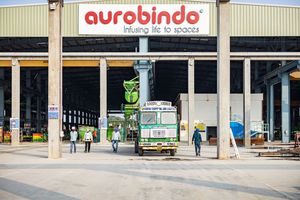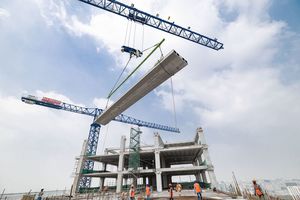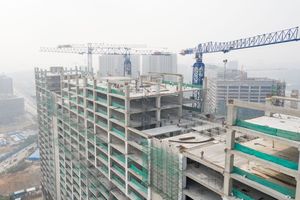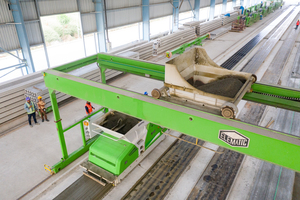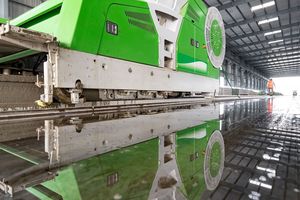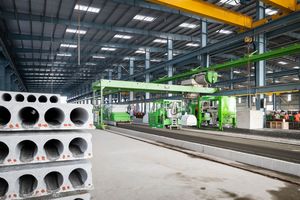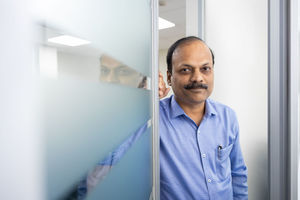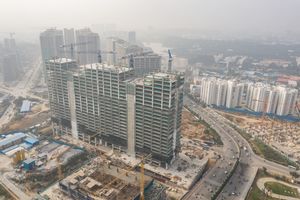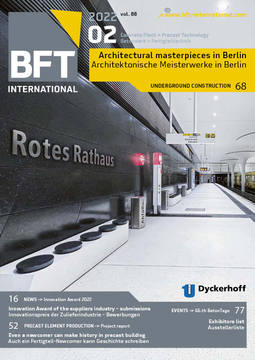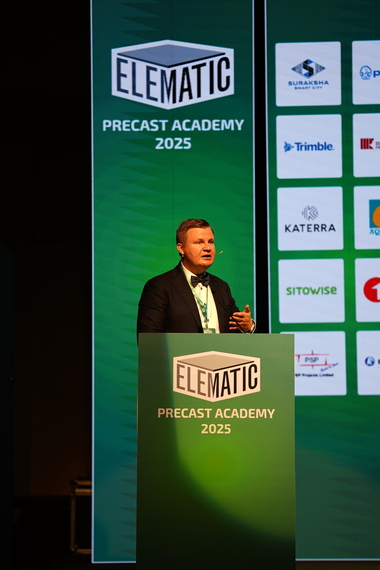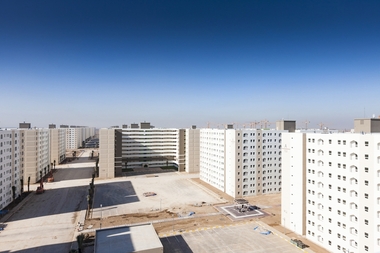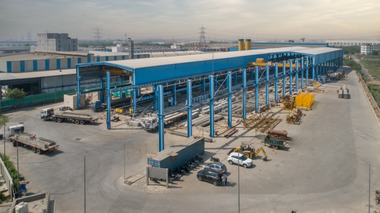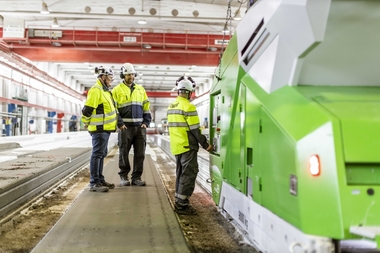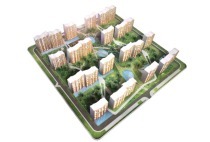Even a newcomer can make history in precast building
There are enormous opportunities in the construction industry in India. In recent years, the southern cities in India have become the focal point for future real estate developments because of their robust infrastructure as well as strong growth in the IT, start-ups and retail sectors. Aurobindo Realty & Infrastructure is one of the frontrunners.
Aurobindo Realty & Infrastructure plans to be one of Hyderabad’s top construction players within the next 10 years. However, even with upbeat prospects in the market, the company also faces daunting challenges. “There are a couple of big challenges in the construction industry in India. One is the lack of skilled manpower and the second is the attrition rate among skilled workers. So, for any project which takes more than a year to complete, you need to hire five to six times the actual manpower requirement,” says Aurobindo’s CEO, Mr. Ravindra Kumar VJ.
Technology is the solution for big construction projects
Considering the number of projects which Aurobindo Realty has in its portfolio, traditional methods of construction are clearly not the way to go. New technology and solutions are needed. “With conventional systems of construction, we face many challenges, such as the availability of skilled manpower, rate of attrition, site logistics and safety issues. These challenges, coupled with project requirements, lead to cost- and time overruns, as well as huge costs in rectifying any defects. All construction companies in India face these issues,” a senior manager from Aurobindo explains.
Aurobindo Realty studied alternative options and discovered the advantages of precast technology. They learned that using precast means faster project execution. In fact, with precast technology, construction goes twice as fast compared to traditional construction and lowers labor requirements by over 50 percent. “Also, we realized that using precast enables high- quality and uniform products since they are produced in a controlled environment. Finally, precast technology, which speeds up construction processes, allows us to take advantage of the building boom in Hyderabad,” he continues.
Sustainability is an important goal in Aurobindo Realty’s projects and precast concrete offers numerous environmental benefits. Using precast can help buildings meet the increasingly important LEED (Leadership in Energy and Environmental Design) criteria.
When evaluating potential precast technology suppliers, the biggest concerns that Aurobindo Realty management had were the reliability of machinery, the credibility of the supplier, the supplier’s proven local and global presence, and whether the supplier offers technical and service support in India.
“We shortlisted Elematic on these techno-commercial grounds, and we went ahead with them,” says Kumar VJ. Aurobindo’s precast factory sits on 21 acres in the Sanga Reddy district, 40 kilometers from the city of Hyderabad city in Southern India.
To build this world-class precast factory, Aurobindo Realty opted for a turnkey installation. Elematic’s project team started with the factory layout plan and provided structural design engineering support. The, the team also supervised the casting of the foundations, the installation of the machinery, and after the handover, provided training for Aurobindo Realty’s machine operators and floor staff.
A force of nature
When the project started, it was India’s monsoon season. The rain seemed endless and, as the factory site was in a remote area, it made even small arrangements during installation almost a herculean task.
But because of the Elematic project team’s extensive knowledge in building precast factoriesy and rich experience regarding theabout local conditions in India, they were able to anticipate possible problems and how to handle those situations successfully. They also knew when to be patient.
“When the rains started, we concentrated on planning. We plotted out activities, made a schedule, and were in constant discussion not only with Aurobindo’s project team, but also with partners involved in the project about what should be done first once the monsoon season ended. We agreed on the priorities, we worked out a workflow chart, and followed that accordingly,” says Shriniwas Potdar, Project Head, Elematic India.
India is known to be a country with high seismic activity. Structural design for buildings in seismic areas is more complex and demanding than for those in other areas.
In building Aurobindo’s precast factory, laying the foundation was not only the most critical phase, but it also took the most time. A dedicated member ofpoint person from Elematic’s team supervised the project design, while another team was responsible for the fabrication and installation of the foundation, thus ensuring the successful completion of the project.
“We know all the parameters that building a precast factory requires, the limits and conditions in India, so we installed all the structures accordingly. We also supervised all the project design. We provided all these services to the client right from the start and until the project was completed,” explains Potdar.
Even a newcomer can feel at ease when assisted by an expert
Building a precast factory is not a singular activity, a lot of things happen simultaneously. This makes coordination with all the parties involved and ensuring the needed materials are delivered on time critical.
Aurobindo Realty might be new to the construction industry, but their management and team know precast technology well and are willing to learn and put that knowledge into practice. When they teamed up with Elematic experts who, that have built dozens of precast factories from the ground up in various locations in India, and know precast machinery and technology inside out, a successful outcome was never in doubt.
With a high priority project, the Galaxy office building, to deliver, Aurobindo wanted to partially start the plant so they could produce the precast elements needed for its construction. Clear communication between their and Elematic’s team ensured that the requirements and priorities were clear. A start-up plan helped ensure that all concurrent activities went smoothly.
“There were many meetings before and during the project’s final stages to ensure clear communication between us. Aurobindo’s project team has taken on the challenges very well and provided us with great information,” comments Potdar.
According to Aurobindo’s requirements, the beam and column line was made operational first to produce the precast elements needed for the Galaxy project while the rest of the plant was still under construction. “Elematic’s team was very supportive and able to make necessaryeded adjustments along the way. It’s not that easy,” says Aurobindo’s Allwyn Ronald Fernandes, Head of Precast Plant Operations.
In March 2019, the factory was in full operation – materials were delivered and installed on time – - with automation fully in place. By mid-2020, the 105-meter Galaxy office tower made history as the tallest office building constructedbuilt with precast technology in India. This year, Aurobindo is set to complete another iconic landmark in Hyderabad, a 25-floor IT building named, Orbit.
Aurobindo is extremely happy with the results of their cooperation with Elematic and the precast products manufactureprodduced in the factory. They even presented Elematic with a written letter of appreciation, stating “We are very happy to work with Elematic, and only with the support of Elematic were we were able to complete this factory within our schedulescheduled time.”
“It was the wonderful partnership between the Elematic team and Aurobindo Realty teams that, which made the project possible,” says Shridhar Rao, Sales Head, Elematic India.
Tips on how to build a precast factory
“I would advise anyone entering the business to have clear current and future plans, to identify in which area of precast production they are going to be strong and then select the machinery for that particular segment accordingly. Then, they should be able to see the return onfrom the investment they have made,” says Kumar VJ.
Establishing a precast factory is not just about the cost: Cchoosing the right partner is crucial in ensuring the project’s success. The impact of this decision will remain for many decades and it will be reflected in future revenue.
“We would suggest to prospective newcomers to the precast industry in India to select their technology partner with much care and scrutiny. The team should understand precast technology and the local situation,” says Rao.

